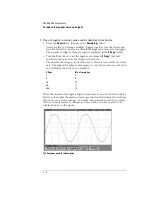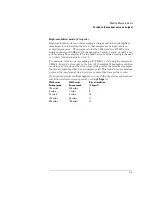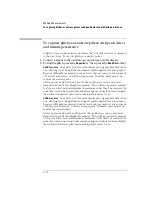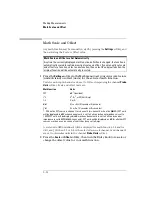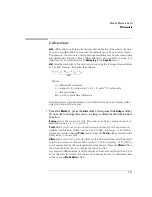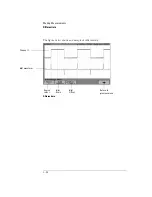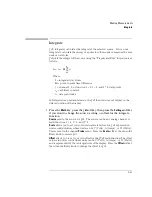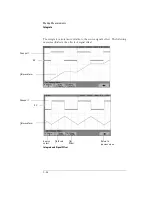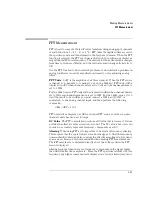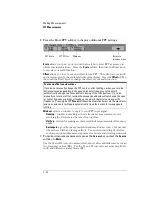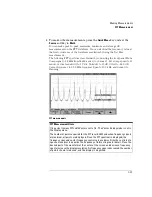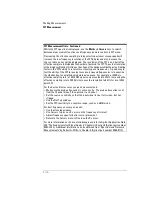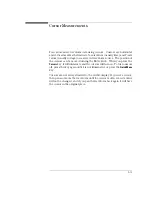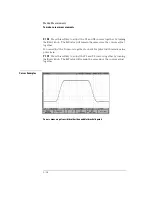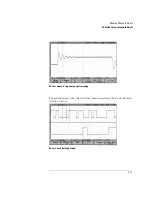
5-21
Making Measurements
Differentiate
Differentiate
d/dt
(differentiate) calculates the discrete time derivative of the selected source.
You can use differentiate to measure the instantaneous slope of a waveform.
For example, the slew rate of an operational amplifier may be measured using
the differentiate function. Since differentiation is very sensitive to noise, it is
helpful to set acquisition mode to
Averaging
in the
Acquire
menu.
d/dt
plots the derivative of the selected source using the "average slope estimate
at 4 points" formula. Equation is as follows:
Where
d = differential waveform
y = channel 1, 2, or function 1 + 2, 1 – 2, and 1 * 2 data points
i = data point index
∆
t = point-to-point time difference
In Delayed sweep horizontal mode, the d
/
dt function does not display in the
delayed portion of the display.
• Press the
Math
key, press the
d/dt
softkey, then press the
Settings
softkey
if you want to change the source, scaling, or offset for the differentiate
function.
Source
selects the source for d/dt. The source can be any analog channel, or
math functions 1 + 2, 1 – 2, and 1 * 2.
Scale
allows you to set your own vertical scale factors for d/dt expressed in
units/second/division, where units can be V (Volts), A (Amps), or W (Watts).
Units are set in the channel
Probe
menu. Press the
Scale
softkey, then turn the
Entry knob to rescale d/dt.
Offset
allows you to set your own offset for the dV/dt math function. The offset
value is in units/second where units can be V (Volts), A (Amps), or W (Watts)
and is represented by the center graticule of the display. Press the
Offset
softkey,
then turn the Entry knob to change the offset for d/dt.
A scale unit of
U
(undefined) will be displayed for scale and offset when 1-2 or
1+2 is the selected source if channel 1 and channel 2 are set to dissimilar units
in the channel
Probe Units
softkey.
d
i
= y
i+2
+ 2y
i+1
– 2y
i-1
– y
i-2
8
∆
t
Summary of Contents for 54621A
Page 4: ...iv ...
Page 10: ...Contents 6 ...
Page 11: ...1 Getting Started ...
Page 38: ...1 28 ...
Page 39: ...2 Front Panel Overview ...
Page 63: ...3 Triggering the Oscilloscope ...
Page 117: ...4 MegaZoom Concepts and Oscilloscope Operation ...
Page 171: ...5 Making Measurements ...
Page 222: ...5 52 Making Measurements Making overshoot and preshoot measurements ...
Page 223: ...6 Utilities ...
Page 239: ...7 Performance Characteristics ...
Page 250: ...7 12 Performance Characteristics Agilent 54620 series Performance Characteristics ...
Page 260: ...7 22 ...


